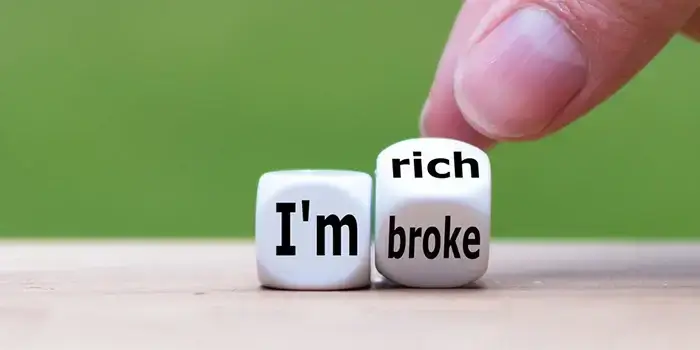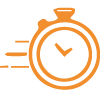Table of Content
TABLE OF CONTENTS

Overview
The year and a half after the COVID crash has left consumer confidence adrift on a never-before-seen kind of bubble. This one is different from what the Baby Boomers rode in the late 90s leading up to the tech bubble burst; or from the pre-2008 bacchanalia that got people believing they can take out multiple mortgages because of their own “worth”, when they were but a means to pumping up mortgage-backed securities. Credit bureaus have started to sound the alarm on delinquency trends, but it’s difficult to fathom what’s to come because income estimation has gotten more difficult (despite the tons more data available on every person who has any online activity). While consumer confidence metrics seem green based on how much people are spending, consumer psyche is further and further habituated to negative financial events and consequences. Six factors contribute to this conditioning:
Factor 1: Unrealistic Optimism
This well-studied psychological phenomenon says that how we calculate risk is always biased to favor ourselves. Always the hero in our stories, we think we have better odds, make better decisions, and are less cursed when we make bad ones as we benchmark against others who turn out worse. We saw this play out when many homeowners traded up their homes and acquired multiple properties pre-2008, well beyond what their debt-to-income ratios could bear, only to walk away from them because the stigma of filing for bankruptcy did not exist when everybody else was doing it. What we learned: We can weather anything. No need to be extra cautious.
Factor 2: Money Numbness
We’ve been paying for things online for some time, even before the pandemic. Instant gratification has been king in customer experience. To cater to this mentality, Buy Now Pay Later (BNPLs) have regained popularity, while companies turn a blind eye to dull income calculations. Since the introduction of Bitcoin in 2009, we have been in a prolonged state of flux as our concept of money transforms into something we can’t touch or see. We put this invisible money in a digital wallet and, by now, have become habituated by its value’s wild peaks and troughs. We have become numb to market fluctuations, ignoring the size of our wallet when it’s low yet euphoric in its momentary highs. We think we can afford anything if timed right. What we learned: We can passively watch our investments fluctuate. Don’t sell because of FOMO.

Factor 3: Newfound Value for One’s Time
Let’s face it. COVID was the shotgun wedding between companies and digital transformation. The next 12 months will tell who actually got their transformation right, as reopening “sticks” and work settles down to a new normal. By now, workers have realized they can be productive remotely, and other companies may better appreciate the new work/life balance they have come to value or the new skills they’ve acquired during the pandemic. For companies, this isn’t just about going digital and getting on the cloud; it’s about adopting a future-ready culture. What we learned: Making a life we love is more important than making a living.
Factor 4: Unemployment Benefits Have Tipped the Decision Scale
There is no safer time to make the switch, rethink careers, start a business, or invest in “Happy New You” than now. It is no coincidence that the most googled phrases since March 2020 were about starting an online business that can be managed remotely. One of the most popular online businesses is owning a vacation rental to set up passive income. The exodus from big cities to the suburbs continues. Get the dream home, scout beautiful areas, live where you vacation, become a perpetual Airbnb’er. The bigger unemployment checks are but the final nudge to embolden consumers to explore and take their time to realize what matters. What we learned: Working costs more than not working. Quit the job. Move someplace nice. Travel more. Buy the shoes.
Factor 5: Variable Conditioning Forces Learned Helplessness or Escape
If you want to keep someone in a constant fight or flight mode or hurrying to make decisions because of FOMO, do not set a schedule for their rewards or punishment. This pandemic has been dishing out variable conditioning on us all this time: Get out and do what we’ve always wanted to do because there may not be tomorrow. A stronger variant could close things back up again, which could send us back inside, so travel now. Buy the car now. Buy the overpriced house now. What we learned: Escape requires buying things. Thank goodness for Buy Now Pay Later.
Factor 6: Do-It-Yourself Social Media Culture
Order everything online, get things delivered ASAP. Customize things yourself. Sell your designs. Buy a car online. Buy a home online. Learn to invest. Learn to trade cryptos. Learn anything from YouTube. Make money off of videos you post. Send money instantly. These are good things, but not all such ventures will succeed. Meanwhile, things bought on credit now need repayment, and cash flow is low.
With these six factors at work, it is easy for consumers to lose their bearings on how much (or how little) money they have and how fragile their cash flow is. When pent-up demand fizzles out, the reality of overextended credit shall reveal itself.

So far, we’ve talked about consumers, but what happens with the businesses catering to them when all of the factors above are clouting the customers’ buying decisions?
- How does an online retailer get to know the Unbanked, who are in a fog of Unrealistic Optimism with all this perceived access to money?
- How does any provider really determine their share of the wallet?
- How do alternative lenders make sure their credit scoring and evaluations are cognizant of the above factors?
- What’s the real debt-to-income ratio if both “debt” and “income” are being redefined as we speak?
- Should consumer confidence be indexed differently?
- When consumers don’t pay their debt, do the traditional collections efforts still work?
- What is the new lag in one’s digital footprint updates now that the pandemic has blurred entity or identity resolution?
These are the exact topics that we will dissect in our Meetups. The first one is scheduled for August 19th. It’s a hybrid – primarily virtual, but with a Miami venue. We will be joined by guest speakers who are experts on Payments and Collections. We will contrast past and future trends while mapping out the key data, infrastructure, analytics, and customer journeys to focus on for businesses to transcend to the new era of hyper-personalization - one that is highly risk-aware and well beyond cross-sell and upsell. Are you ready for the next wave of defaults?
Conclusion
Reality checks, by means of inflation, lowered unemployment benefits, higher delinquency rates, reopening of businesses in the city, are all ashore. How unshakeable is consumer confidence this time around? And does that confidence really have the wallet to back it up?

Maria Singson
VP & General Manager, Data Science
As GM of Data Science, Maria Singson has pioneered Centers of Excellence, fostering a culture of digital transformation through data management, engineering, and science. She leads a team of creative data scientists and ensures impactful results, helping clients gain a competitive edge in their industries.
-2.jpg?width=240&height=83&name=Menu-Banner%20(5)-2.jpg)
.jpg?width=240&height=83&name=Menu-Banner%20(8).jpg)

